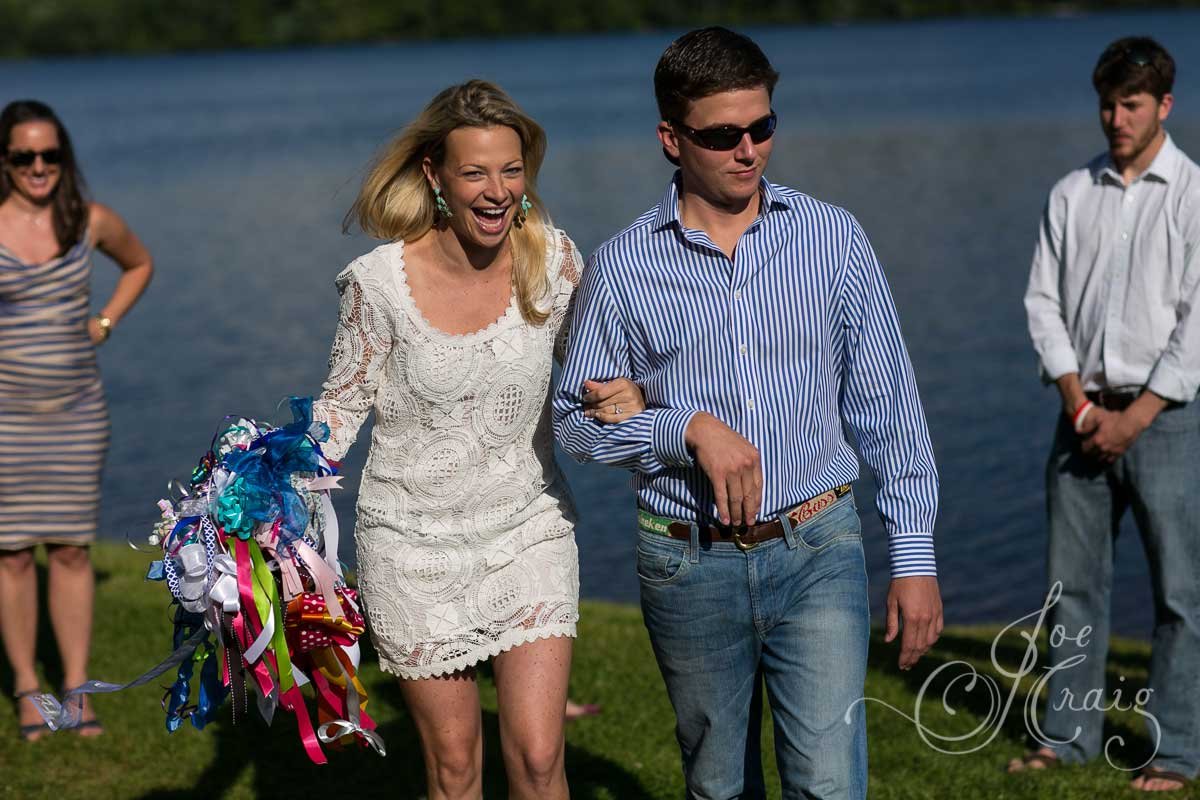12 Steps to a Smooth and Efficient Wedding Rehearsal
The wedding rehearsal is ultimately a practice of your wedding ceremony for you and your wedding party. Traditionally, it’s held the day (or two) before the wedding day followed by a rehearsal dinner in which the wedding party, their dates, and immediate family is invited. In my opinion, you want your rehearsal to be quick (an hour or less in most cases) and efficient, because – let’s face it – there’s dinner and drinks in the near future!
all photos by Joe Craig Photography
Here are 7 things to do before your wedding rehearsal to ensure a smooth and efficient wedding rehearsal:
1. Hire a great wedding coordinator
Ok, I know, this one is obvious coming from me, BUT hiring a great wedding coordinator (or wedding planner) will help walk you through the following steps and ultimately make the entire thing a LOT easier. I always tell my couples, having a coordinator at the rehearsal eliminates the couple from looking “bossy” or “zilla-ish”. The coordinator helps direct the wedding party, the couple gets to enjoy every minute and no one gets hurt.
2. Pair up your wedding party
Once you’ve chosen who you’d like to have in your wedding party, you’ll want to start thinking about who will walk with whom. If your sides are uneven (more bridesmaids than groomsmen, or vice versa), then two can always be paired with one. If it doesn’t matter who is paired together, then pair your troops by height. If possible, make sure the gent is at least the same height or taller than the gal he is escorting. This will make both sides happy, trust me. If anyone has had a relationship in the past and are no longer in the relationship, avoid pairing them together.
3. Decide how the wedding party will enter
Depending on your religious affiliation, your wedding party can enter several different ways. Be sure to check with your officiant prior to making any set-in-stone decisions to see if there are any “rules” or tips they recommend. Traditionally, there are two ways the wedding party can enter: Bridesmaids and groomsmen come in together with the exception of the Best Man who remains at the altar with the Groom, OR all the gents at the altar and the ladies come in on their own. Personally, I like the second option better, mostly because the groomsmen can sometimes get rowdy when waiting to start and I like for them to away from the bride at that point – but that’s just me.
4. Once you decide who’s with who and how they’re coming in, you want to decide on the order
You will want to decide on an order for entering in the processional. This will naturally be reversed in the recessional (after the “you may now kiss the bride!”). You can decide this order using height order, order of importance, closest in relation, favorites – whatever works for you, but I suggest keeping your reasoning to yourself. Traditionally, your bridesmaids will enter once the grandparents and parents have been seated. Followed by the flower girl (if applicable) and the Maid/Matron of Honor. Then it’s time for the bride to enter. Some will choose to have the flower girl enter directly before the bride – again, this is up to you.
5. Choose who you would like to escort you down the aisle
And by choose, I mean ask with gratitude. This is a very special role and should be treated as such. If you are choosing your Dad, don’t just assume he’ll do it. Ask him if he would like to and see his face light up – it will be worth it.
6. Send your readers what they are reading
If you are having anyone read any type of passage, poem, song lyric, etc… send exactly what you’d like them to read prior to the rehearsal. This will give them time to practice and become comfortable with what they’re saying. I also recommend sending a copy to your coordinator, just in case. If you do not have a coordinator, be sure to make a copy in a large, easy-to-read font to have on-hand at the rehearsal and the day of, in case it is forgotten by the reader themselves.
7. Discuss the order of events with your officiant
Before your rehearsal, be sure to sit down with your officiant and discuss what elements you’d like to include in your ceremony and what you don’t. Be sure to ask what your options are and remember to stay true to who you are as a couple.
8. Decide if you will have (or can have) a receiving line following the ceremony
A receiving line is an opportunity for guests to congratulate your new marriage and for you to thank them for coming. If you choose to do a receiving line, decide who will be a part of it (traditionally, the couple and their parents, sometimes Maid of Honor and Best Man, too) and make them aware at the rehearsal.
Be sure to note that a typical receiving line for approximately 150 guests will take about 30-45 minutes (or more) so be sure to figure that into your timeline.
If you do not have a receiving line, it is incredibly important to reach out to each guest at the cocktail hour and/or reception and thank them sincerely for attending your wedding. Do not leave that role up to your parents. The guests came to support and see you.
And 5 ways to make sure things go well (and quickly) during the wedding rehearsal:
1. Start by lining up the wedding party as they would be during the ceremony
In most ceremonies, the bride stands on the left facing the altar, groom on the right, though it’s reversed for Jewish ceremonies. The bridesmaids and groomsmen stand on the respective sides facing the guests. Parents sit directly behind their respective children.
With the approval of your officiant, start your wedding rehearsal here. That way, everyone knows where they’ll end up after walking in.
If it helps, think of it like this:
Think of your ceremony like a play that has three acts. Act One is everyone walking in and taking their places. Act Two is the ceremony itself; when you say your “I do’s”. Act Three is everyone walking out.
For your rehearsal, start in Act Two. Then do Act Three, then Act One.
2. Briefly run through the order of events of the ceremony
Depending on your religious affiliation, there will be different things you do in your ceremony. Briefly run through the events and ask any questions on things you aren’t sure on.
For events that involve other people, like readers and gift givers, be sure to invite them to the rehearsal to practice their role. I usually ask that those folks fully practice their part so they’re more comfortable on the wedding day.
3. Practice the recessional
This is how the wedding party will leave AFTER the ceremony. It’s easier to practice this next rather than the processional (how they’ll enter) – trust me.
The recessional starts with the Couple, followed by the Maid/Matron of Honor and Best Man. The remaining wedding party pairs up and follows them up the aisle starting with the ones closest to the middle. The bridesmaid and groomsman that are the farthest out are the last of the wedding party to exit which is the cue for the parents to begin their exit. Traditionally, Parents of the Bride exit first followed by the Parents of the Groom. The remaining guests will leave by the aisle they’re in.
4. Practice the processional
Once the wedding party has left during the recessional, regroup and line up for the processional. Since they should already be familiar with where they are going, it should go smoothly.
If you have a short aisle, have the next person wait until the person before them is all the way to the front row of seating. If it is a longer aisle, have them begin around the middle.
A slow pace is always preferred for photos, but I always advise to walk to the beat of the music as it will feel the most natural for the walker and the guests.
5. Discuss where the wedding party will go after the recessional
Whether you are doing a receiving line or not, make sure to explain to the wedding party and immediate family where to go after the ceremony recessional. If they need to stay for pictures, discuss a meeting spot to all meet at so everyone is on the same page. If you will be exiting the venue with bubbles, flags, or any other items, explain it to your wedding party so they can help lead the guests in what to do.
AND A SUPER IMPORTANT NOTE: DON’T FORGET THE WEDDING LICENSE FOR THE WEDDING REHEARSAL!




